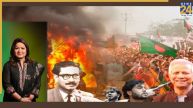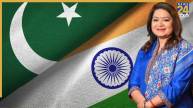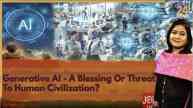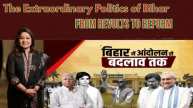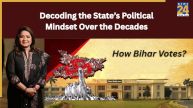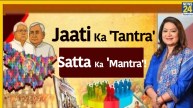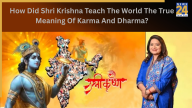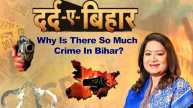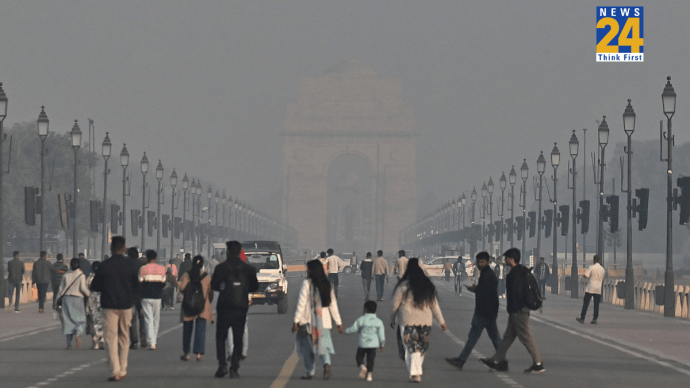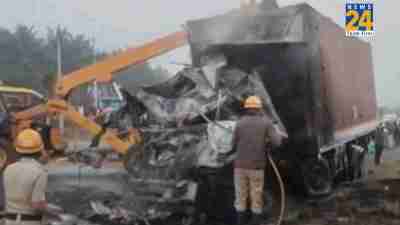– Anurradha Prasad
(CMD and Editor-in-Chief, News24)
Bharat Ek Soch: How did Indians perceive religion during the British era? Today, we will attempt to provide answers to this very question.
What role did religion play in uniting Indians against British rule? How did Mahatma Gandhi’s concept of ‘Ram Rajya’ evolve from vote bank politics in the 21st century, reshaping the significance of religion?
The ‘Dharma chakra’ of India
In 1857, the British quashed the rebellion through brute force, but their policies and intentions were becoming clear to educated Indians. The challenge was to unite Indians against the British. Bal Gangadhar Tilak pondered over such questions. He discovered how enthusiastically Ganesh Chaturthi was celebrated in Gwalior, and this idea took shape in his mind. Tilak initiated the connection of people in religious India using the Ganesh festival. He began associating people with Lord Ganesha, the remover of obstacles, creating a bond amongst the Indian masses. In 1893, public celebrations of Ganesh Chaturthi began. Initially, it was celebrated in Pune, then it spread to ten different places. During the Maratha empire, Ganesh Chaturthi was celebrated on a grand scale, but Tilak’s efforts slowly led to the revival of the festival throughout Maharashtra, and Tilak himself emerged as a prominent leader. He was using Ganesh Chaturthi to prepare the ground for the anti-British movement.
Tilak’s Unique Approach
Historians often label Tilak as a Hindu nationalist, but in reality, he was far from it. Ganesh Chaturthi was a practical experiment derived from his thinking. In a religious India, it had a greater chance of success. Tilak’s sole objective was to unite society against the British. At the same time, his efforts aimed to connect all religions and ideologies in the country. Nevertheless, it is also true that he used religion as a means to build the groundwork for a nationalist movement. Gandhi later gave it a wider scope. He identified himself as a Sanatani Hindu.
To unite people in the struggle for freedom, Mahatma Gandhi used religious symbols like ‘Raghupati Raghav Raja Ram’ and ‘Vaishnav Jan To Tene Kahiye’ in his campaigns. He included devotional songs in his programs. Gandhi knew that Lord Ram had a strong place in the hearts of the Indian masses. For him, Lord Ram was an ideal king under whose rule people were free from fear, hunger, and corruption. In his kingdom, every individual had equal opportunities for progress. Therefore, Mahatma Gandhi saw both self-rule and the welfare of all in his concept of ‘Ram Rajya.’
This was a thought that emerged from the name of religion and eventually created a script for India’s partition. The birth of Pakistan as a separate country for Muslims on the world map was a result of this thinking. However, in independent India, there was no shortage of leaders who did not discriminate based on religion and believed in equality. In the Constitution, there was a sincere effort to look at everyone through the lens of equality. In theory and practice, this went beyond the secularism and secular state of Western countries. In independent India, there was a gradual effort to move forward with everyone. During that era, there was also a saint named Karpatrai Maharaj who formed a party called ‘Ram Rajya Parishad.’ On the other hand, there were people like Pandit Deendayal Upadhyay who tried to look at religion from a different perspective within their ideology. According to them, salvation is the ultimate goal of life, but it can only be achieved through the ladder of livelihood and responsibility. This perspective also emphasized the importance of religion. However, it did not separate the spiritual aspect from the practical, as it showed individuals a path to salvation through economic self-reliance and fulfilling responsibilities.
The mantra for the betterment of society
In the characters of the Treta and Dwapar Yugas, the search for the mantra of social betterment began. Even in the thoughts of the socialist leader, Dr. Ram Manohar Lohia, the ideals of Maryada Purushottam Ram persisted. He saw Lord Rama as a hero who could eliminate inequality in society. Thus, he initiated the Ramayana Mela.
Gradually, in the realm of Indian politics, the discussion shifted from Ram Rajya (ideal rule) to the Ram Temple. In the 1980s, the Vishva Hindu Parishad intensified the Ayodhya Ram Temple movement. It was a strategic move in the changing atmosphere of the country and politics, and the disputed site in Ayodhya, locked for years, was opened in 1986.
The BJP began to see electoral opportunities in the awakening of the Ram temple sentiment. The country’s political landscape was profoundly affected by the ‘vote bank’ politics rooted in the symbolism of Hindutva. The transformation was so striking that in 1989, Rajiv Gandhi, who was known for talking about science and technology, had to launch his election campaign from Ayodhya, presenting the establishment of Ram Rajya as his electoral slogan. After that, the political landscape in India was under the influence of the storm of religion and Hindutva for three decades.
Viewing Religion Through Their Lenses
Socialists, communists, and Hindutva ideologues have all viewed religion through their respective lenses. However, for an ordinary Indian, religion is like a magnetic force. It binds diverse regions of India together. Whether a person is from Kerala and seeks darshan (spiritual vision) of Lord Shiva in Uttarakhand’s Kedarnath or hails from Buxar, but makes the first train journey of his life to reach Rameswaram in the south, or starts from Jammu to participate in the Jagannath Rath Yatra in Puri, religion is an integral part of the tapestry of their lives.
This is the unique religious fabric within India that has been knitting the country together for centuries. Over time, the meaning of religion has evolved. While ‘vote bank politics’ and the influence of symbolic Hindutva may have limited the scope and meaning of religion in India, it remains a powerful force connecting people from all corners of the country. With changing times, the connotations of religion have changed. ‘Vote bank politics’ and the rise of symbolic Hindutva may have downsized the scope and significance of religion in India, but it remains a robust thread, contributing to the emotional bonding of an ordinary Indian with the entire nation.
Religion plays a pivotal role in the life of a common Indian, making them engage in pilgrimages, rituals, and customs. It acts as the cement that bonds people with diverse beliefs and values in India. Religion may have been confined and redefined by ‘vote bank politics’ and the power of symbolic Hindutva, but it’s an essential thread that connects people to their emotions and their homeland.


